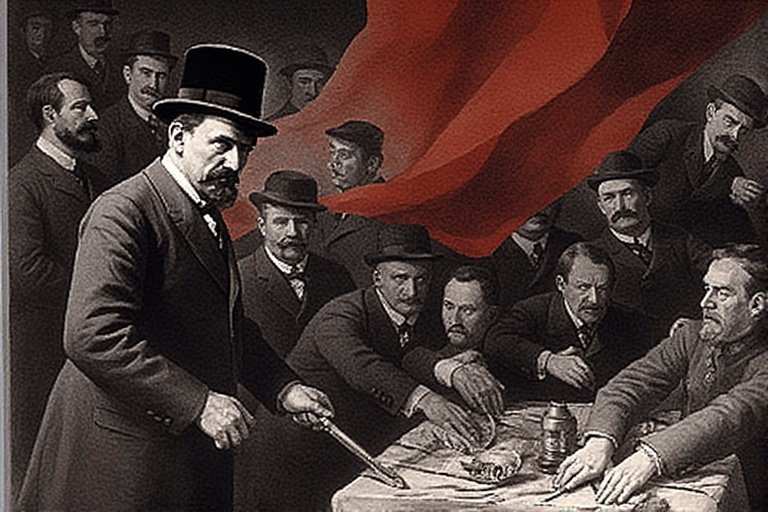
how did lenin use extremism to his strategic advantage, was a master strategist whose use of extremism as a political tool reshaped Russia and influenced global history. His ability to harness radical ideologies, uncompromising tactics, and revolutionary fervor allowed him to seize power in 1917 and establish the Soviet state. This article explores how Lenin used extremism to his strategic advantage, delving into his ideological foundations, organizational tactics, and pragmatic maneuvers that turned a small revolutionary faction into a dominant force. By examining his methods, we uncover the calculated ways in which extremism became a cornerstone of his success, while also addressing the controversies and consequences of his approach.
The Roots of Lenin’s Extremist Ideology
how did lenin use extremism to his strategic advantage worldview, which he adapted to Russia’s unique socio-political landscape. Born into a middle-class family, Lenin’s radicalization was sparked by personal tragedy—his brother’s execution in 1887 for plotting against the tsar. This event pushed him toward revolutionary socialism, where he saw extremism as a necessary response to the oppressive tsarist regime. Unlike moderate socialists who advocated gradual reform, Lenin believed that only radical action could dismantle the autocracy and establish a socialist state. His commitment to extremism was evident in his rejection of compromise, viewing it as a betrayal of the proletariat’s cause.
Lenin’s writings, such as What Is to Be Done? (1902), emphasized the need for a disciplined, vanguard party of professional revolutionaries. He argued that the working class, left to its own devices, would only achieve “trade-union consciousness” and not the revolutionary zeal required for systemic change. This belief in a small, elite group driving radical change was a hallmark of how Lenin used extremism to his strategic advantage, ensuring his Bolsheviks remained focused and uncompromising.
Building a Revolutionary Vanguard
One of Lenin’s most significant uses of extremism was in the creation of the Bolshevik Party as a tightly knit, ideologically pure organization. He insisted on a centralized structure, rejecting the broader, more inclusive approach of the Mensheviks. This extremism in organizational discipline allowed Lenin to maintain control over his followers and avoid dilution of his revolutionary vision. By prioritizing a small, dedicated group over mass membership, Lenin used extremism to his strategic advantage, ensuring loyalty and rapid decision-making.
The Bolsheviks’ secrecy and willingness to operate underground further exemplified Lenin’s extremist tactics. Facing constant surveillance and arrests under the tsarist regime, Lenin used extremism to his strategic advantage by fostering a culture of resilience and adaptability. His party’s ability to evade authorities and maintain clandestine networks gave it a significant edge over less radical groups, which were often infiltrated or dismantled.
Exploiting Social and Political Crises
Lenin’s genius lay in his ability to turn crises into opportunities, using extremism to galvanize support. The chaos of World War I and the collapse of the Russian economy provided fertile ground for his radical message. While moderate socialists supported the war effort, Lenin’s uncompromising anti-war stance, articulated in works like Imperialism, the Highest Stage of Capitalism (1916), positioned the Bolsheviks as the voice of the disenfranchised. By framing the war as a capitalist plot, Lenin used extremism to his strategic advantage, appealing to war-weary soldiers and workers.
The February Revolution of 1917, which toppled the tsar, created a power vacuum that Lenin exploited with extremist rhetoric. His April Theses called for “all power to the Soviets” and rejected any cooperation with the Provisional Government, which he labeled a “dictatorship of the bourgeoisie.” This bold stance alienated some allies but energized his base, demonstrating how Lenin used extremism to his strategic advantage by polarizing the political landscape and rallying the masses around a clear, radical vision.
Tactical Extremism in the October Revolution
The October Revolution of 1917 was the pinnacle of Lenin’s extremist strategy. Recognizing the Provisional Government’s weakness, Lenin pushed for an armed uprising, despite opposition within his own party. His insistence on immediate action, even at the risk of failure, showcased how Lenin used extremism to his strategic advantage. By mobilizing the Red Guards and leveraging the Petrograd Soviet, led by his ally Leon Trotsky, Lenin orchestrated a swift coup that toppled the government with minimal resistance.
Lenin’s extremism extended to his post-revolutionary policies. The dissolution of the Constituent Assembly in 1918, when it failed to align with Bolshevik goals, was a stark example of his willingness to prioritize power over democratic norms. By replacing traditional courts with Revolutionary Tribunals and establishing the Cheka (secret police), Lenin used extremism to his strategic advantage, consolidating power through fear and suppression of dissent.
Propaganda and Ideological Extremism
Lenin understood the power of ideas in mobilizing the masses. His use of propaganda was unrelenting, framing the Bolshevik cause as a fight against capitalist oppression. By producing an all-Russian newspaper, Vperyod, and later Pravda, Lenin used extremism to his strategic advantage, spreading revolutionary rhetoric that demonized opponents and glorified the proletariat. His slogans, such as “Peace, Land, and Bread,” were simple yet radical, resonating with a population desperate for change.
Lenin’s ideological extremism also involved redefining Marxism for Russia’s agrarian context. Unlike Western Marxists who focused on industrial workers, Lenin emphasized a worker-peasant alliance, a radical departure that broadened his support base. This pragmatic extremism allowed him to adapt Marxist theory to local conditions, using extremism to his strategic advantage by appealing to Russia’s vast peasant population.
The Cost of Extremism
how did lenin use extremism to his strategic advantage, it came at a significant cost. His uncompromising policies, such as War Communism, led to economic collapse and widespread famine, with an estimated five million deaths by 1921. The use of terror through the Cheka alienated potential allies and sowed fear among the populace. Critics like Rosa Luxemburg warned that Lenin’s extremist centralization risked creating a dictatorship, a prophecy that materialized under Stalin. Nevertheless, Lenin’s ability to use extremism to his strategic advantage ensured the Bolsheviks’ survival against overwhelming odds during the Russian Civil War.
Lenin’s extremism also shaped his international strategy. By founding the Communist International (Comintern), he sought to export revolution globally, using extremism to his strategic advantage in challenging capitalist powers. However, this ambition strained Soviet resources and isolated Russia diplomatically, highlighting the double-edged nature of his approach.
Lenin’s Legacy and Strategic Extremism
how did lenin use extremism to his strategic advantage to his strategic advantage. His ability to channel radical ideology into a disciplined revolutionary movement transformed Russia from a feudal monarchy into a socialist state. Yet, his methods—marked by intolerance for dissent and reliance on terror—set a precedent for authoritarianism. Lenin’s extremism was not mere fanaticism; it was a calculated tool to achieve power in a turbulent era.
In conclusion, Lenin used extremism to his strategic advantage by building a disciplined vanguard, exploiting crises, and wielding propaganda to mobilize support. His radical tactics enabled the Bolsheviks to seize and hold power, but they also laid the groundwork for repression and economic hardship. Understanding how Lenin used extremism to his strategic advantage offers insights into the complexities of revolutionary leadership and its lasting impact on history.
FAQs
1. How did Lenin’s extremism differ from other socialist leaders?
Lenin’s extremism was characterized by his rejection of gradual reform and insistence on a vanguard-led revolution, unlike moderate socialists who favored cooperation with existing systems. His focus on centralized control and radical action set him apart.
2. Why did Lenin dissolve the Constituent Assembly?
Lenin dissolved the Constituent Assembly in 1918 because it did not align with Bolshevik goals, viewing it as a threat to his vision of a proletarian dictatorship. This act exemplified how he used extremism to consolidate power.
3. Did Lenin’s extremism cause the Russian Civil War?
While Lenin’s extremist policies, such as land redistribution and nationalization, fueled opposition, the Civil War was also driven by broader factors like foreign intervention and internal divisions. His extremism exacerbated but did not solely cause the conflict.
4. How did Lenin’s propaganda use extremism?
Lenin’s propaganda, through newspapers like Pravda, used extremist rhetoric to vilify opponents and rally support with slogans like “Peace, Land, and Bread,” simplifying complex issues into radical calls to action.
5. Was Lenin’s extremism successful in the long term?
Lenin’s extremism secured short-term Bolshevik victory, but its long-term success is debated. It established the Soviet state but led to authoritarianism and economic challenges, shaping a complex legacy.


